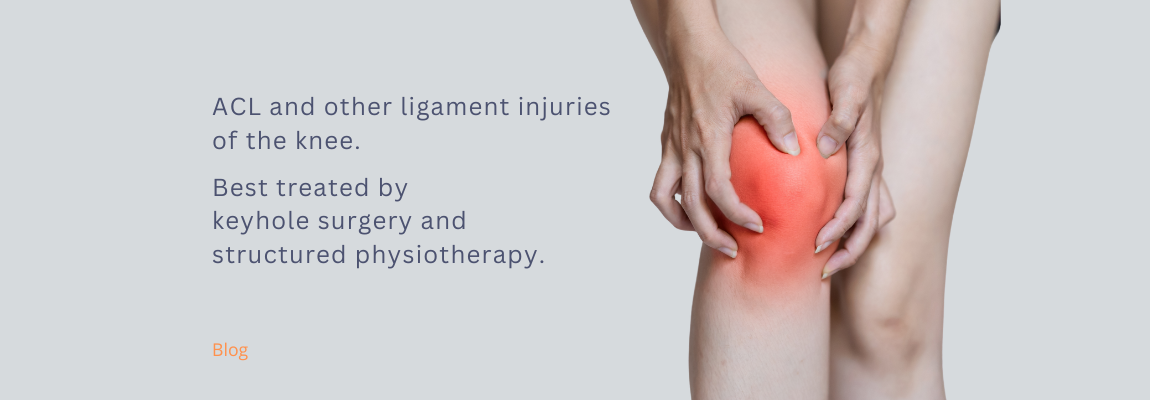
03 Aug ACL and Other Common Ligament Injuries: Treated with Keyhole Surgery and Physiotherapy
Ligament injuries, whether in the knee or shoulder, can be debilitating, affecting our ability to move and perform daily activities. Among the various types or ligament injuries, those involving the knee joint, such as ACL, PCL, MCL, and MPFL, often require specialized treatment. In this article, we will explore the essential aspects of treating these injuries using keyhole surgical intervention and physiotherapy.
Understanding Ligament Injuries
Ligaments are strong, fibrous tissues that connect bones and provide stability to joints. Injury to the ligaments can occur due to sudden jerks, twisting, or direct impact during falls, sports-related bad tackles, or two-wheeler road traffic accidents. The impact can lead to varying degrees of damage to the ligament tissue.
Four significant ligament injuries of the knee include:
- Anterior Cruciate Ligament (ACL) – This ligament connects the leg bone to the thigh from the front and is responsible for the front stability of the knee. ACL injuries often result from sudden stops, changes in direction, or twisting injuries during sports or falls from a two-wheeler, leading to a feeling of the knee coming out towards the front.
- Posterior Cruciate Ligament (PCL) – This ligament connects the back of the leg to the thigh and is responsible for the back stability of the knee. PCL typically gets injured by direct impact to the front of the leg, such as in four-wheeler or two-wheeler accidents, resulting in a feeling of the knee going excessively backwards and instability.
- Medial Collateral Ligament (MCL) – MCL is located on the inner side of the knee and is commonly injured due to blows on the outside of the knee or sudden changes in direction, causing side-to-side instability of the knee.
- Medial Patellofemoral Ligament (MPFL) – This ligament is crucial for the stability of the kneecap and can be injured during sudden twisting, pivoting, or impacts on the kneecap, resulting in its outward displacement and tear of the MPFL.
Treatment of Ligament Injuries
While some ligament injuries can be managed through conservative treatment, most ligament injuries, especially in young and active individuals, are best treated with keyhole repair/reconstruction. This approach restores stability and facilitates a complete return to function in a short period, with a very high success rate of restoring normalcy and enabling a return to sports and physical activity.
Physiotherapy for Ligament Injuries
Physiotherapy plays a crucial role in the conservative management of ligament injuries. A complete physiotherapy ligament injury management program will be detailed in the main blog.
Surgical Intervention for Ligament Injuries
Surgical procedures may involve:
- Arthroscopic (Keyhole Surgery) Procedures: These are minimally invasive surgeries performed using small incisions, resulting in faster recovery times and reduced scarring.
- Repair Techniques: These aim to reattach the torn ligament to their original positions using sutures or anchors.
- Ligament Reconstruction: This involves using a graft (usually from the patient’s own body or a donor) to augment or replace the torn ligament.
Ligament injuries, including ACL, PCL, MCL, and MPFL, can significantly impact knee stability and function. After keyhole surgery and ligament repair/reconstruction, physiotherapy plays a crucial role in re-establishing and restoring motion, functional capacity, and the ability to return to sports or physical activities. Post-surgical physiotherapy focuses on reducing pain and restoring the range of motion and strength of muscles and soft tissues around the knee.
A well-performed keyhole surgery, complemented with a proper physiotherapy program, can put you back on track with confidence.
